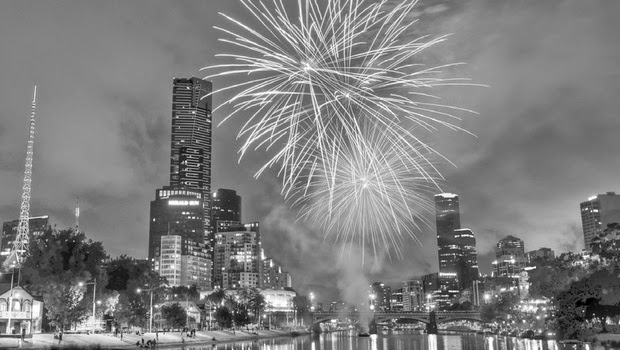The last day of any new year is celebrated with gusto across the globe and more often than not, the party is often taken to the streets. From the ancient times, celebrations were marked by large public gatherings. People cheering on in town squares festooned with lights and decorations suited to the occasion, fireworks and general goodwill doing the rounds. However, this year our celebrations are marred by a pall of gloom and an undercurrent of fear because of a world that is dramatically veering towards polarisation, a lack of balance and respect for human life and an increasing propensity towards violence. As the year draws to a close, I revisit the cities that have reaffirmed my belief in the indomitable human spirit which makes sure there are good times even when the going is not so good.
From mile-high curtains of fairy lights to the noise and sparkle of fireworks as the clock chimes twelve, from a multitude of heads bobbing to a countdown in glittery party hats to party whistles, new year’s eve in some of my favourite cities has been all about bonhomie in these large gatherings and a whole street doing a new year countdown. Nothing is quite as festive as strangers, families and friends coming together in what seems like a giant metaphorical hug to the universe at large. There are a few cities of the world I have travelled to during this time and a certain joie de vivre prevailed that made them memorable in different ways. New Year’s eve gatherings in these cities somehow served as a time capsule for me, capturing the place and its people in one frozen moment in time.
Kolkata, the city that will always be home, is a city of revelry in the last week of every year. It is a city I yearn to return to at this time simply because of the frenetic energy with which it celebrates a festival that has little to do with its socio-religious fabric. Christmas and new year celebrations here have been given state sanctions with Park Street, the epicentre of festivities, dressed up in lights and festive banners sponsored by the government itself. I remember being a part of these celebrations since when I was allowed to venture out on the streets on my own. I remember teetering on the broken pavements in my first pair of high heels especially purchased for the day. I remember being with friends, lovers and family on various new year’s eve celebrations on this selfsame street. But more than anything, I remember being one of a milieu which drew people from all walks of life. As long as you had a party horn and shiny headgear, you were welcome to join in the fun.
KL, the capital city of a predominantly Muslim country, couldn’t be more liberal and full of energy and camaraderie on new year’s eve. With the restaurant and pub-lined Bukit Bintang drawing in the crowds, I found myself among the expats and locals, the Asian, Hispanic, Black and Caucasian people, the young and the old-- all of us who had come together for that one night in a street party that just went on and on. Federation Square in Melbourne makes for a beautiful New Year’s eve celebration. With a massive fireworks display across the water and thousands of people who gather together to watch, it is quite a remarkable sight. My memory remains that of a newlywed couple kissing against sparkling pinwheels in the sky...an image that has remained etched in my memory, though other details of the holiday have begun to blur.
This year I am in Bengaluru, my first New year’s eve in the city, and as I plan to gather with many others at MG Road to usher in 2015, I too hope that it will be a better year for me, my loved ones and the world at large. As I walk under the glittery canopy of lights on Brigade Road, blowing on my bells and whistles, I pray for Bhavani Devi’s two children and hope they find the strength to deal with the tragic death of their mother due to the horrific explosion on Church Street three days ago.
This year I shall wish for more travel and a more peaceful world that enables it. My top destination for this year will be Kashmir and its stark beauty among all its war debris.
Today as I celebrate new year’s eve under the presence of police drones and patrols, I can’t help thinking how it is more important than ever to get out of our homes, parties and isolated urban islands, to go out and greet strangers, mingle and celebrate in one giant street party wherever you might be.
This appeared in The New Indian Express, Bangalore on 1 January, 2015





